Disclaimer: I am fully aware that Louisiana Tech lost last Saturday’s game to the University of Alabama at Birmingham. The final score was 23-22, Blazers. The purpose of the article is to examine what happened on the last play of that game. The purpose of this article is not to say that Tech should have won the game. If Tech wanted to win the game, they had 59:57 worth of football to do it in prior to this play.
Okay, with that being said, Tech should’ve won the game…
Just kidding.
When I heard Dave Nitz’s wonderful voice exclaim, “It’s blocked! The ball game is over” on Saturday afternoon, I felt a lot of things. Anger, sadness, disappointment–ahhhh the sweet, sweet feelings of a Tech fan on Baffling Conference Loss™ day.
But then, Teddy Allen said, “Wait a minute, there’s a white hat down on the 20 yard line. Oh, now they’re signalling game over.” I was a little confused.
Since then, I’ve watched video of the play and seen Tech fans complain on Twitter that there should have been a penalty called on UAB. So I sat and thought back on the years and years of my life I’ve spent watching, digesting, and learning the game of football, and I couldn’t think of any scenario that matched exactly what happened on that fateful play.
So I decided to dive into the rule book to attempt to figure out what happened, and what–if anything–should have been penalized on the play.
The Play
askjklsdglfkhjjsljf
😱
WHAT JUST HAPPENED?! pic.twitter.com/A1aSLzXrI1
— Conference USA (@ConferenceUSA) October 7, 2017
So what we have here is a pretty straightforward blocked field goal attempt. Jonathan Barnes, Mr. Usually Super Reliable, kicks it low and UAB’s defender gets his dragon paw on it. Jonathan Barnes catches it, but is quickly tackled as time expires. Pretty simple, right? Well, not so fast.
Rule Book Factor 1: Did the kick pass the neutral zone?

As you can see above, Barnes catches the blocked kick and attempts to carry it forward. Now, according to Rule 6-3-1, the offensive team is only allowed to advance a kick if it does not pass the neutral zone. Of course, the defensive team can advance it regardless (think App State in 2007).
The rule clearly states that if the offensive team touches the ball after it crosses through the neutral zone, it is immediately a dead ball and change of possession. But the kick ends up in Barnes’s hands, and the referees appear to let the play continue.
It would be absurd for me to claim that I can tell where the UAB player blocks the kick. It’s somewhere around the neutral zone, but from our camera angle, it is not possible to tell exactly where Mr. Dragon Dude blocks it.
Verdict: The referees did not blow the play dead until Barnes was tackled. In my mind, that is a tacit endorsement of his recovery of a live ball. If the ball passed through the neutral zone, Barnes touching it would mean an immediate whistle. Obviously in situations like this, they should definitely let the play advance, but letting the play advance also inherently means that the “call on the field” was that the kick was blocked before exiting the neutral zone.
Rule Book Factor 2: Too Many Dragons?
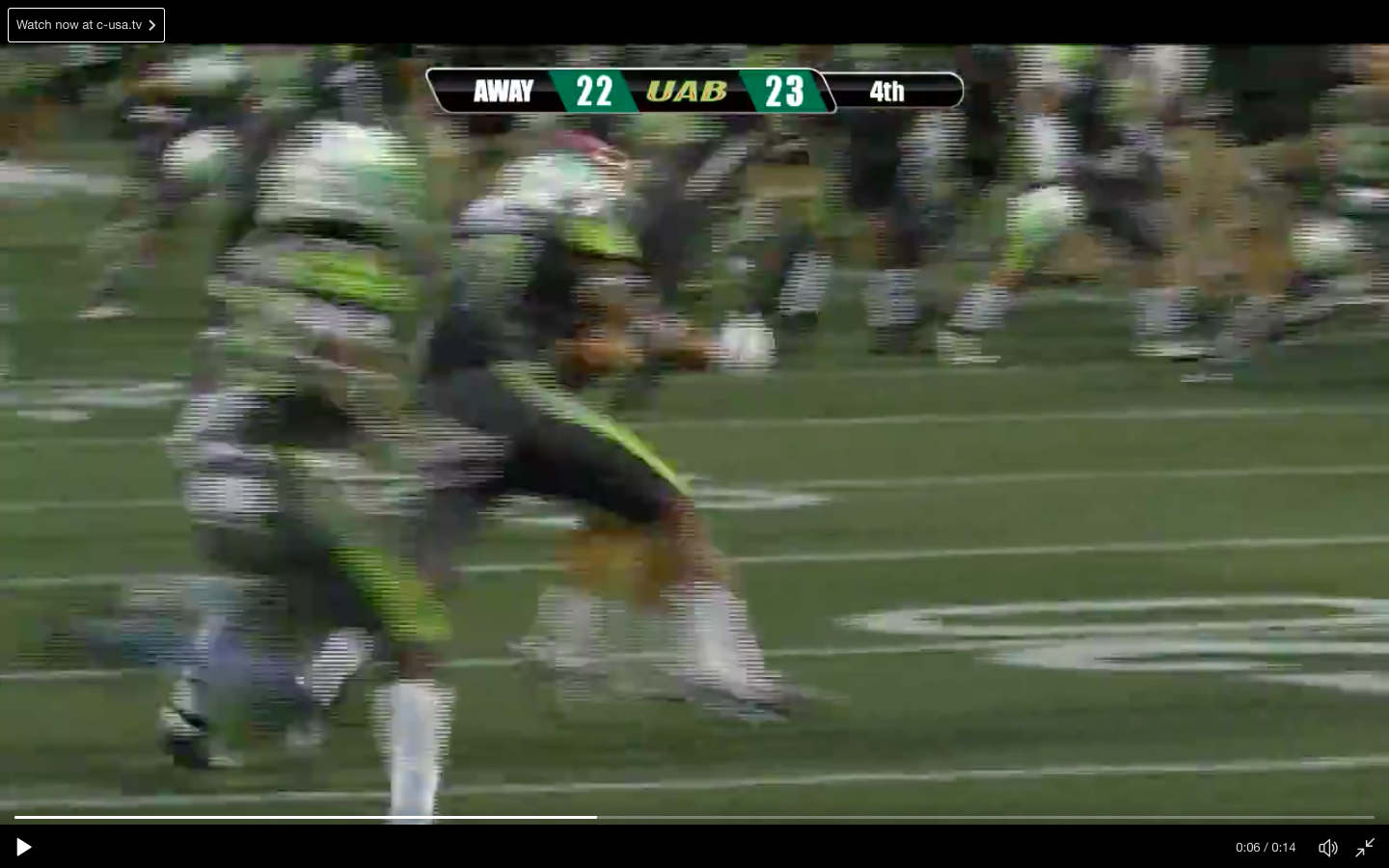
Here’s another angle:
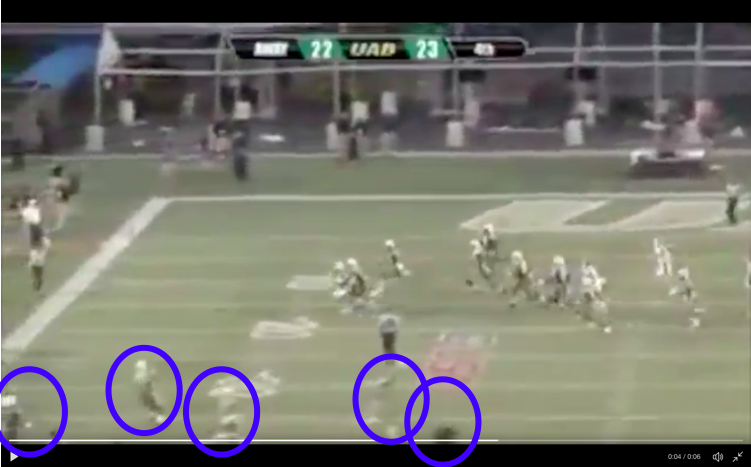
As you can see above, Barnes is in possession of a live ball (if I’m correct on factor 1), and about 45 UAB players are on the field.
Last time I checked–and it has been a while since I’ve taken a math class–45 is greater than the 11 players allowed on the field during play.
You would think the rules on this would be more straightforward, but from my research, it sort of isn’t.
Possibility #1: Too many men, 5 yard penalty.
There are distinct “Too Many Men” penalties, but those all make specific references to the snap. For example, Rule 3-3-5 states: “Team A is in formation to kick a field goal and Team B has eleven players in its formation. Just before the ball is snapped a twelfth Team B player runs onto the field. The ball is snapped and the kicker completes his kick.”
This rule clearly applies to having 12 men on the field when the snap occurs, which is not what happened here. What happens when a bunch of overzealous Dragons flap their way onto the field after a snap?
Verdict: Not the right call.
Possibility #2: Sideline warning, no penalty yardage.
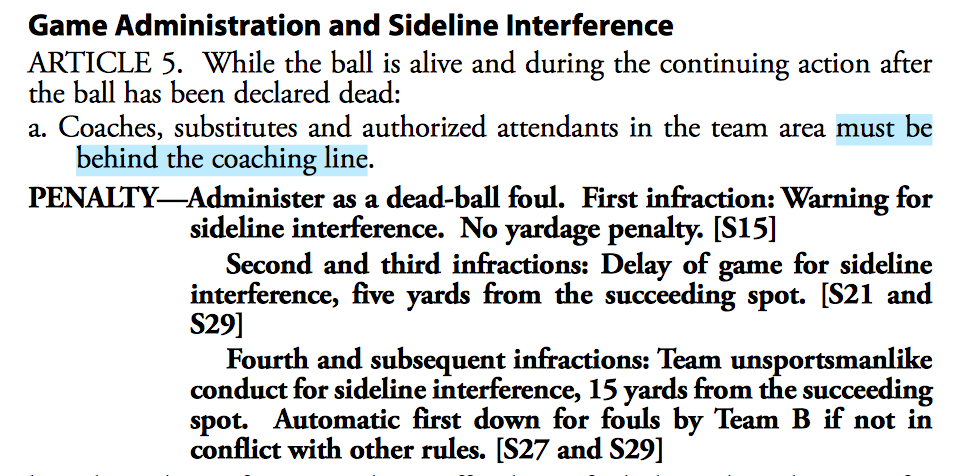
There’s also “Sideline Warning,” which might apply here. It references coaches and authorized attendants, but the key term here is “substitutes.” Subs are players who are not in the 11 on the field at a given time.
If this was the correct call, and it might be, it appears that the game would’ve been over anyway, unless UAB had already been called for sideline warning earlier in the game.
It seems to me that UAB definitely violated this rule. “Substitutes…must be behind the coaching line.” The coaching line is on the sideline, and almost every UAB player (and coach, for that matter) was over it while the ball was in play.
But if this is the right call, it would be a moot point. Honestly, that seems a little ridiculous to me. You can egregiously violate a rule and not be penalized for it? Maybe I’m reading the penalty enforcement incorrectly. “No yardage penalty” might mean there’s a replay of down? I don’t know.
Verdict: While there were definitely too many men on the field, this doesn’t seem like exactly the right call.
Possibility #3: Unsportsmanlike conduct, 15 yard penalty
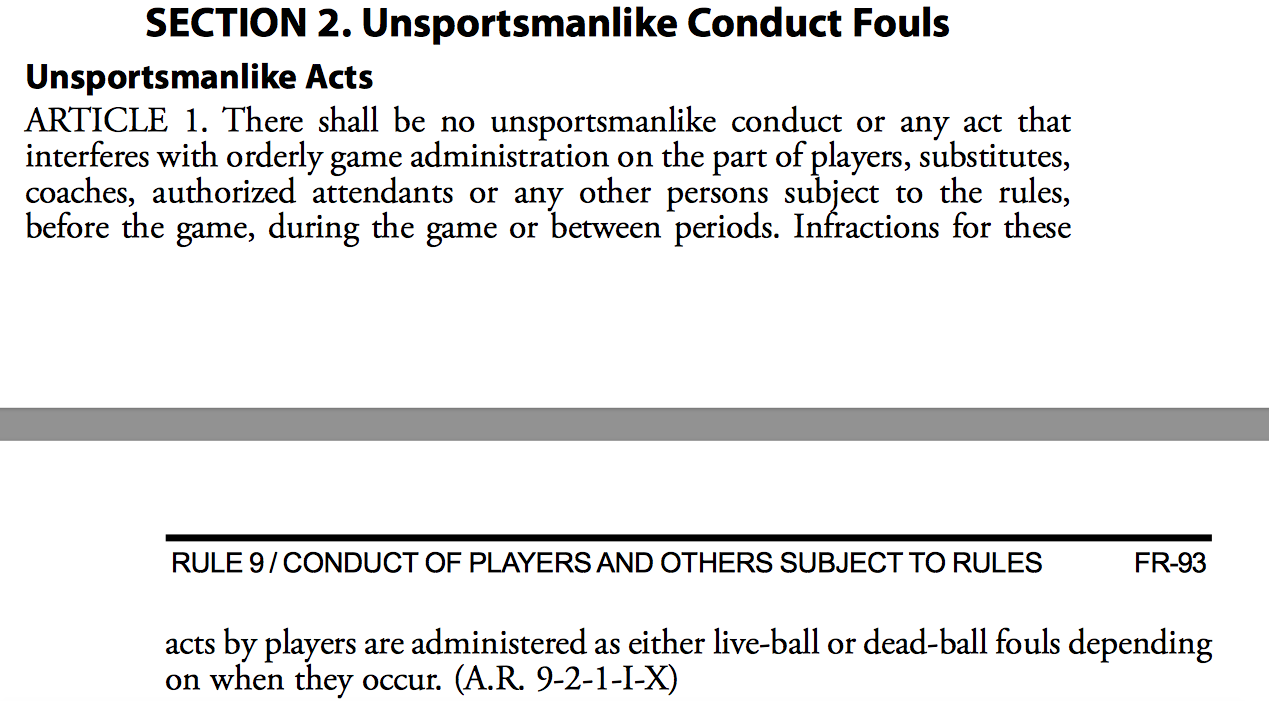
Okay, so honestly this rule doesn’t seem to apply, right?
I guess you could make the argument that running on to the field “interferes with orderly game administration,” but it feels like a stretch to me.
But later on in the rule book, there’s this nifty little section that details penalty enforcement. It’s basically an examples section meant to demonstrate game situations and how they should be officiated.
Here’s what caught my eye: 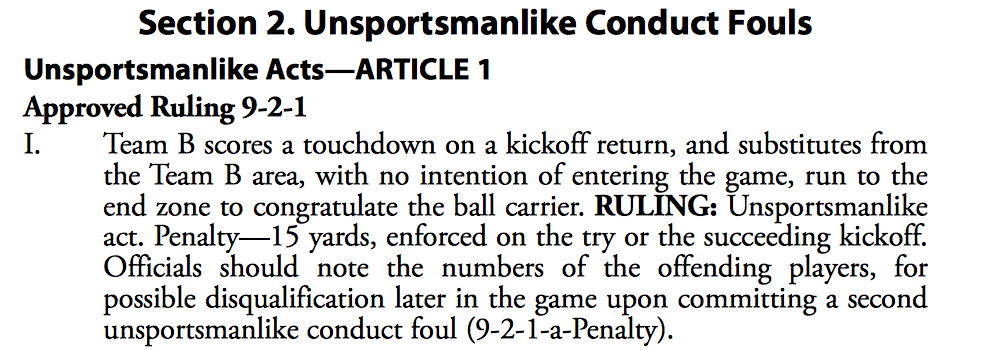 So what’s going on here? “Team B runs to the end zone to congratulate the ball carrier.” This demonstrates that running on to the field in celebration is viewed as an unsportsmanlike act, which should be penalized accordingly. The only remaining question is whether it would be a dead ball or live ball foul.
So what’s going on here? “Team B runs to the end zone to congratulate the ball carrier.” This demonstrates that running on to the field in celebration is viewed as an unsportsmanlike act, which should be penalized accordingly. The only remaining question is whether it would be a dead ball or live ball foul.
My impression is that a dead ball foul would almost certainly not be called after the game ends. Especially in this case. In the example given by the rule book, a bunch of players run to the end zone after a touchdown, but while the game is still being played. In our case, if UAB had rushed the field after Barnes went down, the game’s over; there’s no penalty.
However, go back to Rule 9-2-1. It says “Infractions for these acts by players are administered as either live-ball or dead-ball fouls depending on when they occur.” Since the additional players came on the field with a live-ball in play, I would consider this to be the most likely correct call.
Verdict: This seems like the best call to make here. UAB’s players came on the field illegally to celebrate, which according to Rule 9-2-1, is a personal foul that can be administered as a live or dead-ball foul. If this call had been made, Tech would’ve gotten an untimed, half-the-distance-to-the-goal play.
Would Jonathan Barnes have hit from the 6 yard line? Who knows. UAB very well could’ve blocked another attempt, or JB could’ve easily missed for a fourth time in the quarter. We’ll never know.
So what do I make of all this?
Basically, there almost certainly should have been a penalty called against UAB’s sideline on the play. If the players had simply waited for Barnes to be tackled to rush the field, they would have been perfectly within the rules in their celebration. But they didn’t, and according to my reading of the rules, they should have been punished for it.
Am I saying Tech would’ve won?
Absolutely not. But the CUSA refs appear to have missed this one.


Pingback: What is gtpdd? – gtpdd
Pingback: gtpdd’s UAB Preview – gtpdd